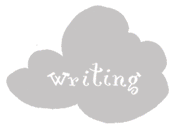

|
Jason Robert Bell September 2005 It took me a while to make up my mind about Jason Robert Bell's 'Kala' series, which was most recently represented in Chicago at the NOVA Young Art Fair in late April and as 'Untamed Beauty: Kala Versus the World of Men' at Suitable gallery last November, because the paintings and drawings of the adventures of his lady-sasquatch are simultaneously ugly and beautiful, awkward and graceful, sophomoric and profound. Watching the series grow in Bell's Brooklyn studio over the past three years, I've come to believe these are crazy, remarkable works -- and a great deal of their greatness lies in this nagging bipolarity. I keep thinking about them. Bell's 'Kala' series draws us in by aping pulp and comic book styles, tapping their raw, charismatic, kinetic zing. Here is Kala fighting a giant eagle to swipe an egg for the feral girl she's taken into her protection. Here the behemoth battles a troop of 'sportsmen,' tricked out in the latest newfangled gear, sure to despoil the wilderness. Here she fucks an awestruck, bearded naturalist. Here she snatches a fish from a muddy primordial stream or forlornly plays a harp concocted from a tree and hair and spit or something. And right there is the ludicrous joke of my friend's project -- think 'Bambi' as a musical starring Arnold Schwarzenegger in drag and you're in the neighborhood -- but Bell is joking on the square. He asks why we as a society are still so uncomfortable with powerful, independent women? Why do we mass produce pop whore-heroines outfitted in action-lingerie that leaves just enough to the imagination to evade the censors? Why does the exotic so turn us on? Why is our love of nature so often expressed by driving over it, shooting it, fencing it off, drilling it, chopping it, paving it, polluting it? These are ultimately paintings about morality. Bell's Kala is Beauty and the Beast rolled into one big, hairy woman-thing with a pig nose and bare breasts and behind. (R. Crumb eat your heart out.) As such, Bell takes the pretty refinement of classical nudes, really the whole Western cannon, (especially Gauguin's sultry, exotic 'savages') and shouts it's all just tits and ass. You squirm because you can't turn her messy seminudity into a classical ideal in safe white marble. Would she just throw a shirt on? Kala runs around a lost Eden, erected out of the swooning landscapes of the Hudson River School (who themselves were expressing longing for a wild America they feared was being lost) by way of 'One Million Years B.C.' (You know, that 1966 cinema classic with cavebabe Raquel Welch in an animal-hide bikini.) This fear of nature being despoiled is a great American tradition, just ask Thoreau. But Bell undercuts it by making it mock-operatic, and mates it with our parallel traditional heebie-jeebies about what lurks in the woods, which in the American vein goes back at least to the Pilgrims and has made millions for Stephen King. Bell's technique too teases us with a mix of straight-on skill and lunkhead wise cracks. These are serious paintings full of deft painterly passages a la the New York Action Painters or Bay Area Figuratives. And they are of the scale and ambition of such Abstract Expressionist works too -- which stole the idea from 19th century history painting. You have to be in their presence to really get them. In reproduction they shrivel up into clumsy illustrations. But in the same room, like Kala, they wallop you over the head with their brute physicality. Then you're stopped short by the purposely ham-handed gags: A diptych shows Kala clocking a coffee-toting, G.I. Joe deer hunter from two different angles. The stream in one painting and Kala's tears in another are executed in clear epoxy, making the paintings' construction all too literal, a visual pun. But whatever Bell gets up to formally, his narrative keeps asserting itself -- Kala refuses to quiet down for such erudite considerations as the way the slathered on acid green resolves into leaves. Just like in a fairy tale we side with the tenderhearted Beast, feel sorry for her, root for her to defeat the superficial jerks of Progress, but in the end we still sorta wish she (and the paintings too) would make it easy for us and turn into a beautiful, cleaned-up young princess -- not stay a Shrek. Bell dares us to love this uncouth, unflinching imperfection. Bell's artwork has often been about the odysseys of lumbering titans and ancient gods, (male) creatures built as big and as brawny and as ambitious as he is. Here, telling the tale of a beastly woman, Bell speaks of an awkward and ultimately isolating strength and bulk and intelligence and of the resulting melancholy struggle to find one's place in the world. He speaks about vulnerability. And in doing so, he plumbs something more deeply human. |